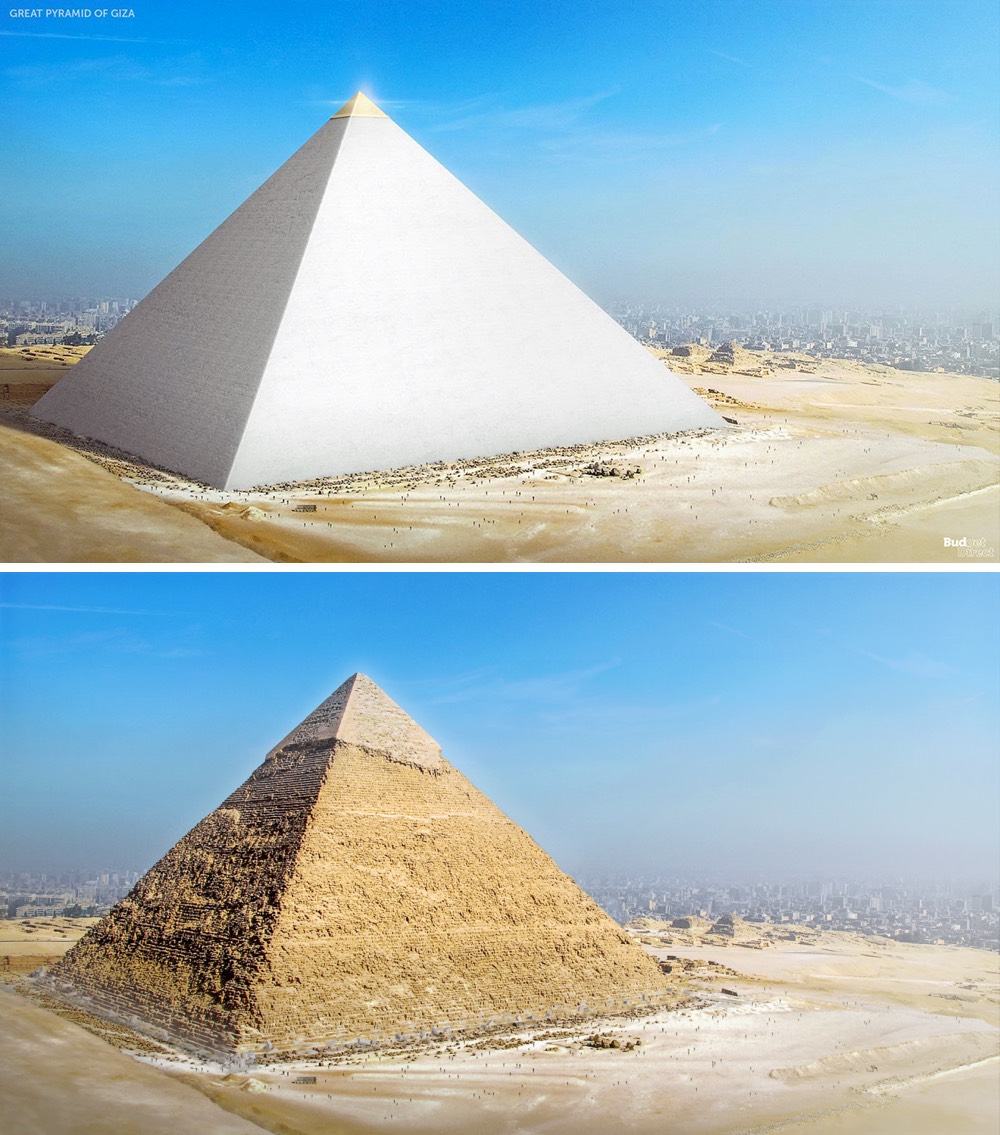What The Pyramids Used To Look Like
The Great Pyramid at Giza—the oldest and most intact of the 7 ancient wonders of the ancient world—became a strong symbol of the sublime in the 19th century, a symbol of power and so absolute every bit to eclipse human understanding. Later on Napoleon's kickoff expedition to Giza, "Egytomania… swept through European civilisation and influenced the plastic arts, fashion, and design," writes Miroslav Verner in The Pyramids: The Mystery, Culture, and Scientific discipline of Egypt's Dandy Monuments.
At the end of the century, Herman Melville satirized the tendency that would eventually give ascent toAncient Aliens, asking in an 1891 verse form, "Your masonry—and is it man's? More than similar some Cosmic artisan'due south." Egyptomaniacs saw otherworldly magic in the pyramid. For Melville, it "usurped" nature'south greatness, continuing as "bear witness of humankind'due south monumental volition to ability," as Dawid Westward. de Villiers writes.

The ancient Greeks believed the pyramids were built with a massive slave labor strength, a theory that has persisted. As Verner exhaustively argues in his book, however, they were not merely built by humans—instead of aliens or gods—simply they were constructed by tradesmen and artisans whose skills were in loftier demand and who were paid wages and organized nether a circuitous bureaucracy.
And as yous can encounter reconstructed in the Smithsonian video at the pinnacle, i of those artisanal tasks was to polish the monument'southward outer limestone to a gleaming white finish that reflected "the powerful Egyptian sun with a dazzling glare." Once the pyramid was completed, "it must accept truly added to the impression of Giza equally a magical port city, bathed in sunlight," says archeologist Mark Lehner in the clip.
In addition to its glowing, polished limestone sides, "the structure would have likely been topped with a pyramidion, a capstone fabricated of solid granite and covered in a precious metal like aureate," writes Kottke. "No wonder they idea their rulers were gods." Or did aboriginal Egyptians come across the Great Pyramid every bit a masterpiece of human being technology, built with the skill and sweat of thousands of their compatriots?
Who can say. But it'due south likely that 19th-century European explorers and artists might have characterized things differently had the Cracking Pyramid still scattered the dominicus over the desert like an ancient beacon of calorie-free instead of sitting "dumb," every bit Melville wrote, stripped of its facade, waiting to have all sorts of mysterious meanings wrapped around it.
via Kottke
Related Content:
How the Egyptian Pyramids Were Built: A New Theory in 3D Animation
Man All Besides Human: A Roman Woman Visits the Keen Pyramid in 120 Advertizing, and Carves a Verse form in Retention of Her Deceased Brother
The Grateful Dead Play at the Egyptian Pyramids, in the Shadow of the Sphinx (1978)
Josh Jones is a writer and musician based in Durham, NC. Follow him at @jdmagness
What The Pyramids Used To Look Like,
Source: https://www.openculture.com/2019/12/what-the-great-pyramid-of-giza-wouldve-looked-like-when-first-built.html
Posted by: davidsonnoby1984.blogspot.com


0 Response to "What The Pyramids Used To Look Like"
Post a Comment